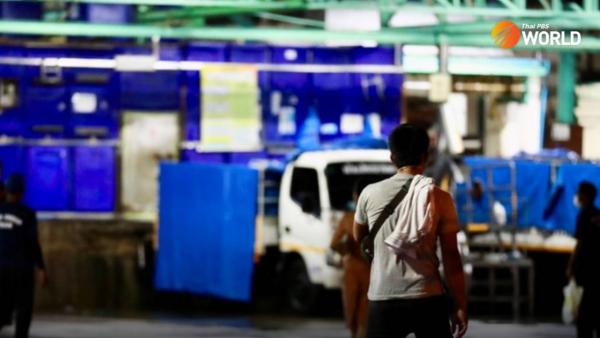Fancy mooncakes up for grabs on e-platforms

The economy might be ailing but bakers of mooncakes are betting on a healthy appetite for their tasty pastries as the run-up to the Mid-Autumn Festival gets underway.
Celebrated all over East and Southeast Asia, Thais have a special fondness for the Moon Festival, as it is also known, as well as a long affinity with the moon. Not so long ago, saying that someone had a moon face was a big compliment and perfect eyebrows were described as crescent brows.
This year the festival falls on September 21 and with just a month to go, many are putting in their orders for mooncakes, both for themselves and as gifts to business colleagues and friends.
Traditionally made in small shops in China Town, mooncakes have evolved into a multi-million business with many leading Thai restaurants and bakery shops jumping on the bandwagon.
Despite the pandemic and lockdowns in some areas, the Moon Festival tradition is continuing, as usual, this year with mooncakes being offered on various online platforms and delivery services. The Kasikorn Research Centre projects that Thailand’s mooncake market will reach at least 900 million baht this year, a modest growth of 7% over last year.
Although COVID-19 has severely affected people’s purchasing power, the Centre’s research indicates that purchases of mooncakes as gifts will be little affected. While Gen X (defined as those aged between 37 and 51) buy boxes of mooncakes for self-consumption or gifting, Gen Y (aged 19-36 years), the most active on social media, tend to buy pieces rather than a whole box. The latter group, notes the K-research, spends the least time on purchase decisions.
“The mooncake sellers should concentrate on Gen X as it is this group who make up the majority of buyers with high purchasing power. In the meantime, they should also consider Gen Y as their secondary market. Baby boomers have brand loyalty and rarely switch brands though most of them now depend on their younger family members to buy the mooncakes,” said the K-research.

From China to Thailand: the recent history of mooncakes
Mooncakes were first created in China around 3,000 years ago to worship the moon and to celebrate the harvest. The Mid-Autumn Festival was first recorded during Han Dynasty (202 BC-220 AD). The celebration hasn’t stopped growing since and expanded to Asia, including Thailand, as the Chinese migrated and made new homes.
In Thailand, mooncakes have been around for about 8 decades. At first, the Chinese delicacies were only available in China Town (Yaowaraj). The “cakes” were freshly made without preservatives, prepared only a day or two ahead of the festival, not weeks or months before as is the case today. They were sold in small shops and then expanded to Chinese restaurants, leading hotels and Thai restaurants, and bakery shops.
The mooncakes are used for worshipping the moon and are gifted by friends and families to each other, a tradition that later expanded to include business partners and alliances. Outside the festival, mooncakes are enjoyed in other parts of the world as a form of delicacy.
The traditional mooncakes were initially made using imported wooden molds and mostly by chefs from Hong Kong. They were exclusive and the recipes were closely guarded secrets. The turning point came when listed company S&P turned the mooncake into a very modern snack that can be consumed almost all year round. The value of the market has grown dramatically ever since and was it not for the pandemic, would have exceeded the billion baht mark already.

Mooncakes of the millennials
Typical mooncakes are round though more recently square varieties have gained favor with consumers. The five basic fillings are durian, assorted nuts, lotus seeds, black beans, and jujube. Each may contain one or two egg yolks (from salted duck eggs). The owner of the Chinese restaurant Gok Jee Lao (now called Gokjai restaurant) gave birth to the durian filling, according to the third-generation shop owner Anant Arthinanphan.
“My uncle had an idea when someone gave him durians from the South. He was thinking that it would be nice to have durian filling as a lot of Thai loved eating durian. So he gave it a try and had women in the area taste them. They liked it and when the durian filling went on sale, customers fought to buy them. We had to limit each purchase to five boxes,” Anant recalls with a fond smile.
Nowadays, mooncakes with durian filling can be found everywhere including at Gokjai in Bangkok. E-commerce platforms like Shopee and Lazada have many brands of mooncakes from which to choose so the lockdown is unlikely to cause any problems.
Prices range from 70-80 baht apiece to over a hundred baht. Those from leading hotels such as the Mandarin Oriental Bangkok or the Peninsula Bangkok have a higher price tag as do those imported from Hong Kong by MX Cakes & Bakery. These luxury mooncakes go for more than 150 baht a piece.

Back when the Thai economy was at its zenith, mooncakes topped with gold leaf were snapped up by superrich customers who wanted to impress those they gifted them to. The gold-leaf gimmick did not last long, however, but the variety of fillings has continued to grow. Today fans can find custard, durian, and other basic fillings as well as trendy tastes like green tea and coffee filling. This year, to titillate the taste buds of Thai Gen Y who like anything with Yuzu (citrus fruit), Kyo Roll En has created a Yuzu lava filling. And the mooncakes are no longer a boring brown but can be enjoyed in pastel shades like purple and yellow.
The sluggish economy may make consumers think twice about buying expensive mooncakes but there are still many who want to try new fillings and creations, and can’t resist the delicious-looking mooncakes. And the fancy boxes holding the individually vacuum-sealed mooncakes add to the enjoyment as they are designer items in their own right.
by Veena Thoopkrajae
Photo by Panee Chevapark






